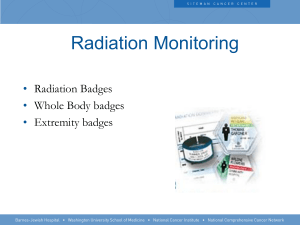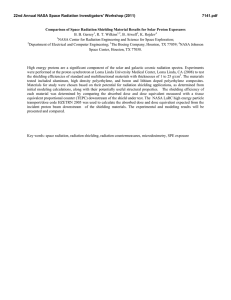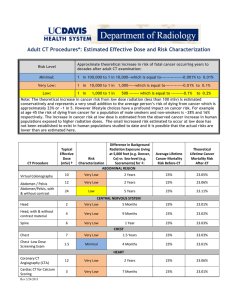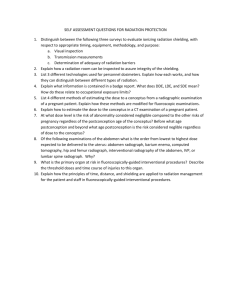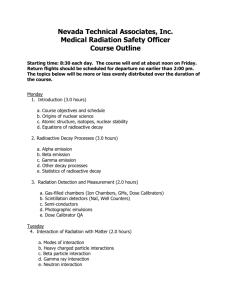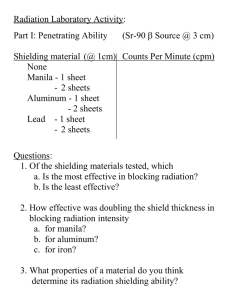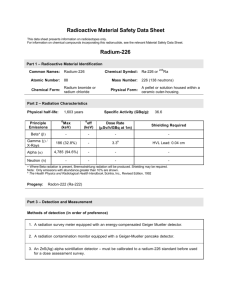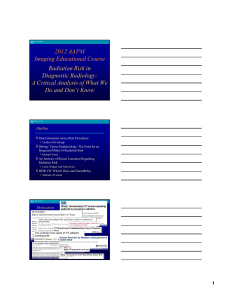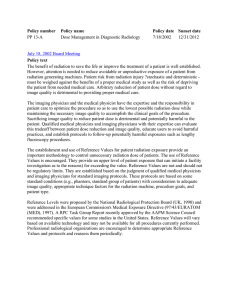Prior Risk Assessment Form
advertisement
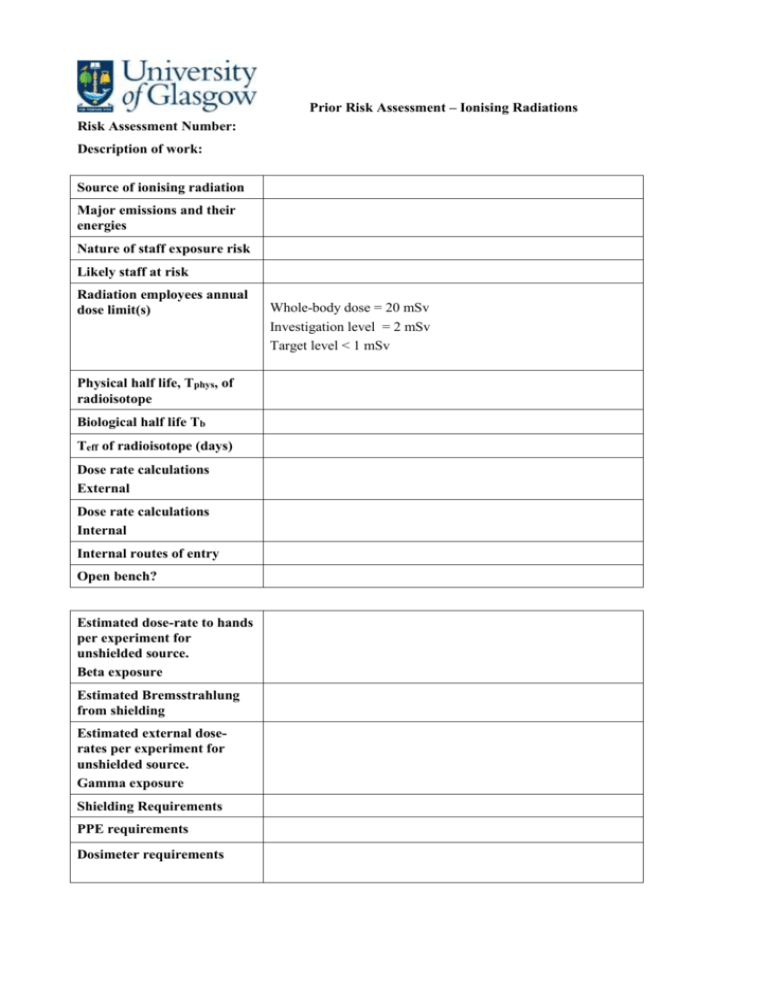
Prior Risk Assessment – Ionising Radiations Risk Assessment Number: Description of work: Source of ionising radiation Major emissions and their energies Nature of staff exposure risk Likely staff at risk Radiation employees annual dose limit(s) Physical half life, Tphys, of radioisotope Biological half life Tb Teff of radioisotope (days) Dose rate calculations External Dose rate calculations Internal Internal routes of entry Open bench? Estimated dose-rate to hands per experiment for unshielded source. Beta exposure Estimated Bremsstrahlung from shielding Estimated external doserates per experiment for unshielded source. Gamma exposure Shielding Requirements PPE requirements Dosimeter requirements Whole-body dose = 20 mSv Investigation level = 2 mSv Target level < 1 mSv Assessment of risk if all protocols, shielding and PPE applied Population odds from whole body annual exposure BERT from whole body annual exposure If the risk is medium or high, are there any ALARP measures that may be improved ie: Yes No Time Distance Shielding 1 Is it possible to reduce the amount of radioactivity used? Yes/No 2 Is additional training or supervision required? Yes/No 3 Will it be necessary to "classify" the worker? Yes/No 4 Should the worker work only in a 'controlled' radiation area? Yes/No ADDITIONAL CONTROLS 1 Are departmental contamination surveys carried out? Yes/No 2 Are portable contamination monitors tested annually? Yes/No 3 Are personal dosimeters required? Yes/No 4 Have all measures been taken to ensure that radionuclides are stored safety and securely when not in use? Yes/No Date of assessment Signature Reviewed by Date 2 Note 1 The Risk Assessor should normally be the laboratory supervisor but some departments prefer the Departmental Radiation Protection Supervisor to carry out this task for consistency in risk assessments. Note 2 Identify whether a COSHH risk assessment is also required. Note 3 Personnel who might be at risk: 1 Registered radiation workers 2 Other non-radiation workers who share the same laboratory 3 Cleaners 4 Maintenance staff 5 Contractors 6 Visitors 7 Undergraduate students 8 Members of the general public 9 Others SUMMARY Risk assessment is a five step process: 1 Identify the potential hazards 2 Decide who might be harmed and how 3 Evaluate the risks and decide whether existing precautions are adequate 4 Record your findings (ie on this form) 5 Review the assessment periodically and revise if necessary. Notes: This risk assessment should be read in conjunction with the appropriate System of Work 3
